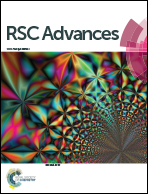Invariom approach to electron density studies of open-shell compounds: the case of an organic nitroxide radical†
Abstract
A combined electron density study from X-ray diffraction and quantum chemistry for an organic nitroxide radical TEMPONE, with an unpaired electron residing on its NO group, allowed expansion of the applicability of the invariom approach to open-shell compounds. Although this approach was not able to reproduce an additional electron accumulation at the oxygen atom (earlier found in a nitronyl-nitroxide radical by C. Lecomte et al.) as compared to the multipole refinement of high-resolution X-ray diffraction data (possible reasons for this being thermal motion and crystal environment), it provided a good approximation to the experimental electron density using both the ‘open-shell’ invarioms and a series of their ‘closed-shell’ analogues. All of them were shown to describe weak intermolecular interactions in TEMPONE very well; these may serve as superexchange pathways in magnetic materials and tune their magnetic behavior.


 Please wait while we load your content...
Please wait while we load your content...